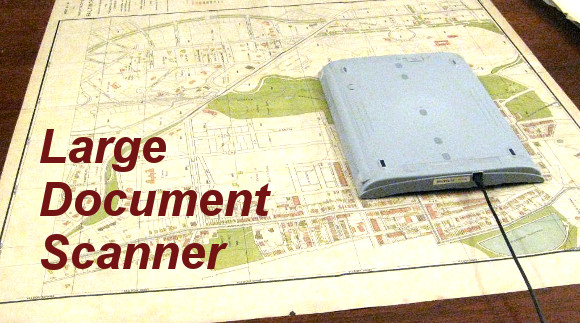When you need to scan really large documents, camera setups can get pretty expensive. There are professionals that do it, but they are fairly pricey too. What if you need to do it on the cheap? A flatbed scanner would be perfect, but the lip on the edge of most flatbed scanners keeps the document from touching the platen properly. [Matthew] decided to hack his Canon LiDE 90 scanner to use it in a face-down format. By removing the top of the case, and making a couple extra tweaks, the scanner can now lay flat and simply be moved in a grid.
Once you have the images, you’ll need a way to stitch them together. [Matthew] points to this tutorial, but he awesomely decided to write a little Python script to make it all happen automatically. We imagine that script might be useful for more than just this project.
We’ve seen some other scanners recently, but this one is probably the easiest for the majority of hobbyists to achieve with parts on hand.
















Brings back fond memories of the old Logitech ScanMan II from back in the day. If only I had the stitching capabilities of today’s software 15+ years ago!
Whoops. The model was the ScanMan 256.
I still have one of these sitting somewhere in my parts bin. My favorite hack with one was the guy who used it as the basis for an astrophotography camera.
You know, I thought about doing something similar by using it on my large-format Graflex press camera as a ‘rolling shutter’ scanner to capture moving panoramics, but I never had the time while working on my PhD. I think I donated it to a thrift shop when I moved to Europe. I was having a hell of a time tracking down a computer with an ISA slot too.. ;)
hmm, I’ve recently had a couple of boxes & mobo with ISA slots
bestowed upon me.
I think there’s even a “new old stock”
hand drag scanner with its ISA card in this bundle.
This could possibly enable an interesting winter project!
I’ve seen some HID mouses who are capable of scanning and autostitching documents while hovering over them back and forth. But I dont know if they can provide the same resolution as a flat bed scanner. Presumably not.
no, but you could combine raw imager bar from Lide scanner with two optical mouses (mounted at both ends) and make your own ‘old style’ hand scanner
mouses would provide positional info for the image reconstructor while imager bar would just pump out pixels
mice
Now that’s a hack!
Awesome Hack! However to say large format scanning is expensive well that’s a topic for debate! My local print shop scans up to A0 for free. Prints are where I spend the money!!
Give it a set of motor-driven wheels that allow it to move in the X and Y directions, an actuation system to lower it for a scan and raise it when done so it can move on to the next grid, write some more code to automate the whole system and call it the ScanBot, ScanCrawler or ScanCreeper! :)
That’s a neat idea. Though during testing you’d probably end up with lots of scans of the living room floor, haha.
Attach it to a Roomba and vacuum at the same time. :)
Nah, giant jig to “pick and place” the scanner.
We get our 36×48 maps from yesteryear scanned at a local print shop for $1.50 a sheet, and we actually consider that expensive. They do a high quality jpeg, tiff, and pdf for us for every page.
In a pinch, I have an older HP scanner that was able to do this same stuff.
Nice hack though!
this is really wild! nicely done. next step is to build/form/print a bezel that will close off the gap between the case and the glass. without it, you’re going to end up with an incurable quantity of dust/dirt/schmutz on the scanner element. will be interesting to see this develop further!!!
So this guy took the lid off his flatbed and flipped it upside down.
This is a hack??? I did this 15 years ago with my first scanner, which had a flat bed with no lip like the Canon he used for this… Are you guys sure this isn’t called common sense?? Just sayin’
Did you also stitch them together with Python script you made available for other? Just asking.
No, I likely used one of the many free tools already available to do it – My time is valuable ;)
Oh, maybe I used photoshop. Does PS have that built in?
The only flat bed scanner in my junk box is part of 3 in 1 unit that has a problem with the orinter. Not to dismiss this, but I wonder if this has any advantage over hanging a large subject and taking a photograph. This is something hackers can do and donate to a local public library to earn some cred within the community.
Ha I bought a canon lide 90 on ebay for cheap a few years ago and got it cheap because the top was broken off. Turns out I got a very cheap large document scanner.
The actual document looks historic. Resting a heavy scanner on historic documents is probably not advisable, but I can see why this is useful for more recent material.
until the image loaded, I was really hopeful it was going to be a scanner and r/c car hacked together. :-)